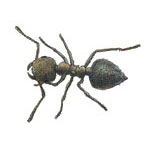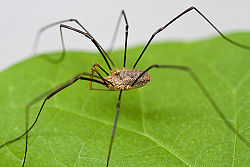READY TO GET STARTED?
REQUEST A FREE ESTIMATE
Fill out the form below or call (888) 466-7849 for a free, no-obligation estimate.

This is a question that comes in frequently so we wanted to address it. The cost of NorPest Green pest control is varied depending on the specific needs and issues of you and your home. If you aren’t having specific pest issues and want to keep it that way, the cost of preventative treatments can be given over the phone by one of our customer service representatives. Whether you are having a specific bug issue or looking for preventative measures, a highly trained Northwest Exterminating professional will conduct a FREE inspection of your home. By completing an inspection we are able to conduct a customized program that will meet the pest needs for you and your home.
NorPest Green is a program that was developed by Northwest Exterminating to get rid of bugs and insects while maintaining the lowest environmental impact as possible. The active ingredients are derived from flowers, plants, and natural elements that are friendly to the Earth and your family…pets included. We use a 5 step Integrated Pest Management (IPM) process.
Complete our FREE Inspection Form or call us at 888.466.7849 for a free, no obligation inspection of your home.
 It may be one of the most easily identifiable pests but it’s also commonly misrepresented. Granddaddylonglegs, or daddylonglegs, are often thought to be spiders but are actually harvestmen. Harvestmen get their name because that is when they are usually seen…during harvest time. There are about 150 species of daddylonglegs in North America.
It may be one of the most easily identifiable pests but it’s also commonly misrepresented. Granddaddylonglegs, or daddylonglegs, are often thought to be spiders but are actually harvestmen. Harvestmen get their name because that is when they are usually seen…during harvest time. There are about 150 species of daddylonglegs in North America.
When you spot a granddaddylongleg, with its long and thin legs, it is not hard to see where the “longlegs” part of their name comes from. They use their infamous legs to catch insects, spiders, and plants that they feed on. They are found around structures of homes and buildings, and tree trunks, presumably looking for food. Inside of a structure they are typically found in garages, basements, crawlspaces, or other damp areas of the home. You won’t usually find them in the common living areas.
Another common misconception about daddylonglegs is that they are poisonous or venomous…neither of which are true. They are not harmful to humans or animals, they won’t even bite.
Did you know that granddaddy long legs weren’t spiders?
Call Northwest Exterminating to get rid of grand daddy long legs or other pests in your home or business.
 It may be one of the most easily identifiable pests but it’s also commonly misrepresented. Granddaddylonglegs, or daddylonglegs, are often thought to be spiders but are actually harvestmen. Harvestmen get their name because that is when they are usually seen…during harvest time. There are about 150 species of daddylonglegs in North America.
It may be one of the most easily identifiable pests but it’s also commonly misrepresented. Granddaddylonglegs, or daddylonglegs, are often thought to be spiders but are actually harvestmen. Harvestmen get their name because that is when they are usually seen…during harvest time. There are about 150 species of daddylonglegs in North America.
When you spot a granddaddylongleg, with its long and thin legs, it is not hard to see where the “longlegs” part of their name comes from. They use their infamous legs to catch insects, spiders, and plants that they feed on. They are found around structures of homes and buildings, and tree trunks, presumably looking for food. Inside of a structure they are typically found in garages, basements, crawlspaces, or other damp areas of the home. You won’t usually find them in the common living areas.
Another common misconception about daddylonglegs is that they are poisonous or venomous…neither of which are true. They are not harmful to humans or animals, they won’t even bite.
Did you know that granddaddy long legs weren’t spiders?
Call Northwest Exterminating to get rid of grand daddy long legs or other pests in your home or business.
Overwintering is a common term used on this blog to describe pests and their habits. Since it is used so often we thought we’d go into a little more detail about what overwintering means to pests and your home.
The definition of overwinter is “to pass, spend, or survive the winter: to overwinter on the Riviera.” [source]
Overwintering is a term used in several categories such as pests, birds, and plants. In our case, we are most often referring to pests and their activities that allow them to survive the cold temperatures. Insects overwinter by finding a warm place to call home, in many cases this is YOUR home. Bugs will enter structures, mulch, leaves or soil to protect themselves from the low temperatures.
Bugs look at your house as their “winter vacation home”. On occasion, they will make themselves known during the overwintering period by venturing out into the living spaces of a house. But most often, they emerge in the spring time when the temperatures begin to rise. This is a big reason why there is such an increase in visibility of pests in and around your home in the spring time. They’ve been there all along; they just may not have been very active.
Preventing these pests from getting into your home in the first place is your best defense.
Common insects that overwinter:
Protecting ourselves and our pets from ticks are a big concern this year. The EPA has put out information through the NPMA on tick bites and Lyme disease prevention:
An ounce of prevention
It is important to know about tick habitats and personal protection techniques because most people are exposed to ticks in residential areas. Here are a few ways to prevent ticks:
1. Keep the lawn mowed to make your property unattractive to ticks. Ticks are found in high grass, yards with trees and shrubs.
2. Keep backyard grasses set back from the woods around a home by eight feet. Place a three-foot wood chip, gravel or mulch border area between grassy edges and tick-prone zones. Ticks prefer moist areas like leaf litter and the edge of woods. Ticks don’t like the sun and wait in shady areas on brush and grasses.
3. Practice personal protection. Personal protection involves using repellents, wearing appropriate clothing and checking for ticks on one’s person, which is the most effective practice of all. In tick habitats, wear long, light-colored pants tucked into socks or boots, and long-sleeved shirts. This keeps ticks from reaching the skin and makes them easier to see. Ticks like places on humans that are warm and moist, most commonly the backs of the knees, armpits, the groin, the scalp, the back of the neck, and behind the ears. Attached ticks should be removed as soon as possible using fine-point tweezers since risk of disease transmission is increased the longer the tick is attached.
To read the full article click HERE.
To protect your home and loved ones from ticks, call Northwest Exterminating.
On Cinco de Mayo, we ran the billboard below:
We thought the board was perfect for the occasion based on the song “La Cucaracha” that became popular during the Mexican Revolution, but also because cockroaches are a major concern in homes across the South. Cockroaches can be found in a variety of locations and are a significant health risk due to their ability to transmit several known diseases. Roaches are heavily reliant on humans for their food and shelter so they are most often found indoors.
Along with diseases, roaches cause allergens in a home. Children and people over 60 have a higher increase of respiratory issues and can go into anaphylactic shock if an asthma attack should occur due to being exposed to the allergens. A clean home can deter cockroaches and other pests from invading your home.
General House Cleaning Tips:
Common roaches found in Atlanta area homes are the American Cockroach, Brown-banded Cockroach, German Cockroach, and Oriental Cockroach. For more information on roaches, visit our Identify your Pest section of our website. Roaches infest in high numbers so it is best to call an exterminator to ensure that the infestation is taken care of quickly and effectively.
Every good party has a theme! And what better time to have a party than the summer? Summer is a great time for cookouts, family get-togethers, birthdays, or just because! And what goes together better than summer and bugs? So why not have a bug-themed party?
Bug theme decorations:
It’s never a good idea to pair real bugs with food. But we can make our food look like insects, right! Try these bug themed treats that are sure to be pleasing on the eyes and the stomach.
Bug theme foods:
Don’t let uninvited guests ruin your party. Call Northwest Exterminating to get rid of any mosquitoes or pests.
How can something as small as a flea be such a huge pain? Pet owners are all too familiar with the annoyance of fleas because they make us AND our pets miserable. Fleas attach themselves to warm-blooded animals (pets and humans) and feed on their blood. A flea bite can cause discomfort, painful, itchy red bumps and can lead to an allergic reaction. In some cases, they can even transmit diseases like the bubonic plague, murine typhus and transfer tapeworms in pets.
To prevent fleas from becoming a pest in your home, clean and vacuum frequently. A clean home is a healthy home and will aid in the prevention of other pests as well. Cleaning will help to remove any fleas and their eggs. Maintaining a clean yard is just as important, especially if you have pets that go outside often. A well kept lawn with no debris or pet droppings will reduce the flea population around your home. Bathe pets regularly and apply a flea and tick treatment. Most importantly, call a professional exterminator if you have fleas in your home. A flea infestation can be very difficult to get rid of and is best left to the professionals so the problem does not continue to grow.
Interesting Flea Facts:
Got a flea problem? Call Northwest Exterminating for professional, effective flea control.
How can something as small as a flea be such a huge pain? Pet owners are all too familiar with the annoyance of fleas because they make us AND our pets miserable. Fleas attach themselves to warm-blooded animals (pets and humans) and feed on their blood. A flea bite can cause discomfort, painful, itchy red bumps and can lead to an allergic reaction. In some cases, they can even transmit diseases like the bubonic plague, murine typhus and transfer tapeworms in pets.
To prevent fleas from becoming a pest in your home, clean and vacuum frequently. A clean home is a healthy home and will aid in the prevention of other pests as well. Cleaning will help to remove any fleas and their eggs. Maintaining a clean yard is just as important, especially if you have pets that go outside often. A well kept lawn with no debris or pet droppings will reduce the flea population around your home. Bathe pets regularly and apply a flea and tick treatment. Most importantly, call a professional exterminator if you have fleas in your home. A flea infestation can be very difficult to get rid of and is best left to the professionals so the problem does not continue to grow.
Interesting Flea Facts:
Got a flea problem? Call Northwest Exterminating for professional, effective flea control.